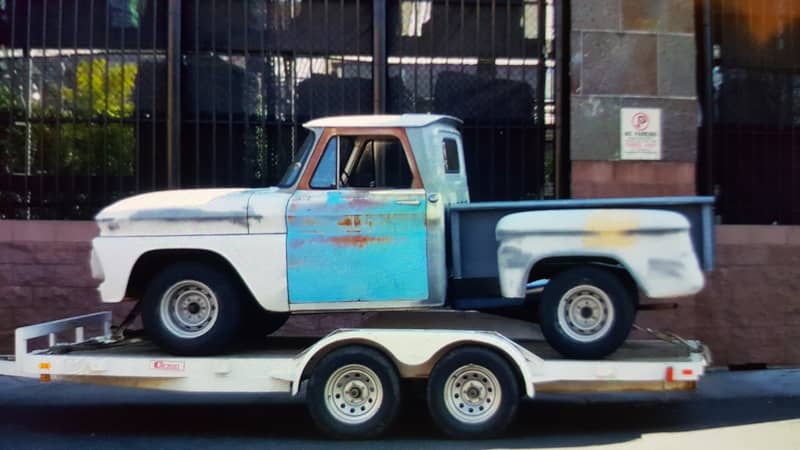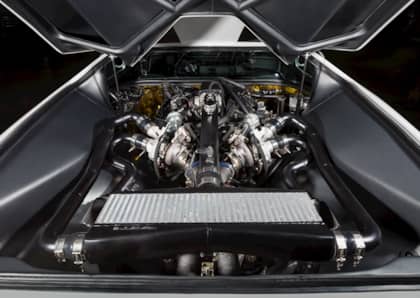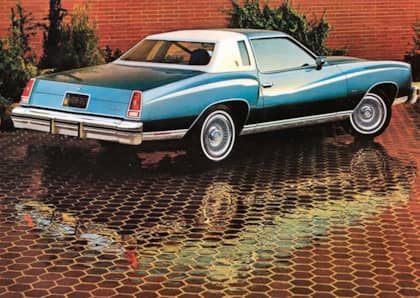Planning a Build: The Blueprints for a Successful Project
For many, building a car from the ground up is no simple task. Between the countless late nights in the garage, scouring forum threads for a write-up on a part because the instructions are no help and spending 10 minutes looking for that wrench you just put right there a second ago, you’ll quickly find that patience is a big virtue. Along the way, you might change your mind about many aspects of the build. But before you even pick up the first tool, laying down the basic blueprints can help you stay on track the whole way through.

(Photo from "Breathing New Life Into This Classic C10")
1. Defining the Purpose
The first (and arguably the most important) question to ask yourself is: “What will this build be used for?” Show cars, drag cars, rally cars, daily drivers, weekend warriors, rockcrawlers, desert racers, overlanders — each is built with a specific purpose in mind. Staying focused on that purpose will help when it comes to selecting parts and designing the framework.

(Photo from "Reviving a Relic")
You may find that your build needs to serve a combination of two or more purposes, so keeping both in mind from the beginning is crucial. For instance, daily driving a car with a five-point harnesses can get annoying every time you get in and out. You might consider leaving the factory seat belts in the car along with the harnesses for those short trips around town.

2. Choosing Your Platform
Once you’ve defined the “why,” you can begin to define the “what.” Choosing the right platform can be either very easy or extremely difficult. For some, the platform has remained the same since day one. Perhaps it’s a ’65 Chevy C10 you’ve always wanted to take to the local Show-N-Shine since your high school days. Or maybe it’s that Nissan S13 sitting in your driveway that you thought about dropping a V8 in. If you’re dead set on a platform, you should find exactly what you’re looking for and avoid compromising for something close to it.

(Photo from "Trophy Rat")
For others, the year, make and model aren't as important as the physical specifications. A few aspects to consider when choosing a platform are the wheelbase, track width, curb weight, weight ratio, drivetrain layout, passenger capacity, fuel economy (yes, some of us still care about this), availability of aftermarket parts and features from the auto manufacturer you might want to keep.

(Photo from "Alex Heilbrunn's Monster BMW E46")
3. Choosing Your Drivetrain
Some would consider the engine to be the heart of the vehicle. And while choosing between a heart of four, six, eight or more cylinders is important to achieve your power goals, there are other reasons to consider carefully which engine goes into your build. Keeping it in the family may be important to particular die-hard fanboys, but that decision may be swayed due to lack of available replacement parts or reliability.

(Photo courtesy of Mike O'Brien)
Other builds require more than the factory motor can put out, leading to an engine swap. It seems the most popular swap is the LS motor, but that didn’t happen by accident. What’s not to love about a reliable, lightweight V8 pushrod motor that’s relatively small by comparison to its predecessors and is backed by the strongest aftermarket parts support in the industry? The point is, you should carefully base your powerplant on more factors than just how much horsepower it produces at the crank.

(Photo from "Gas Monkey Garage's LS-Swapped Porsche 996")
A transmission that fits the bill is just as important. It doesn’t matter how much power you plan to make or how much weight you want to pull around, the right gearbox to handle the job will make all the difference. Once you’ve figured out whether you want a manual or automatic, do research and find a compatible transmission that will fit both the engine and the car’s physical dimensions. With many companies producing bellhousing adapters, the right transmission usually isn’t hard to find.

The rest of the drivetrain will depend on how your build will be set up. For example, drift cars are usually rear-wheel drive, rally cars are all-wheel drive, and rockcrawlers are four-wheel drive. Directing power to the correct wheels is imperative for the style of driving you’ll do with the build.

(Photo from "The Jeep That Leaves Supercars in Its Dust")
4. Delivering Power
The running gear will determine how efficiently all that power is transferred to the ground. A vehicle’s suspension is often overlooked when building certain types of cars. Choosing the correct suspension setup for your project means walking a fine line between function and form.

Show cars may lean more toward a system that makes them look really good when parked. Alternatively, performance-based vehicles have their suspension systems tuned to fit their needs. For example, drag cars have stiffer rear suspension for launching at the strip, and rally cars have much more smooth and dynamic suspension for dirt roads, all the while retaining a low center of gravity.

There are important measurements to keep in mind when choosing the right wheel for your build. The width and diameter can serve both functional and cosmetic purposes. Backspacing and offset measurements can affect how much stress is placed on the hubs, bearings, suspension and steering components. These can also affect the track width of the vehicle, which can greatly affect how it drives. There are also many types of materials used to make wheels. Knowing what stresses they may be subject to will help you choose appropriately.

(Photo from "The Dodge Dakota of Your Dreams")
Last, but certainly not least, decide what kind of tire you’ll need. Proper speed rating, load range, tread pattern, seasonality, treadwear grade and compound are all crucial factors when choosing the right tire. It can make all the difference in the way you intend to use the car. For example, drag radials are not ideal for a car built for the autocross track, and a soft compound tire will wear much more quickly on a car that is driven daily. Many enthusiasts who use their cars multi-functionally may find that a hybrid tire is their best fit. Tires such as the Nitto Ridge Grappler for off-roading or the Nitto NT05 for drag performance were both specifically engineered for the street as well as sport.

(Photo from "Engineering Perfection")
5. Firing It Up!
Walking around your local car show or Saturday morning meet and greet can show you just how unique every vehicle can be when a gearhead gets their hands on it. Although each and every part contributes to the final form, a custom build is much more than the sum of its parts. The individuality and character come from the person who put the whole thing together. And no matter how crazy or wild your ideas might be, it can one day become a set of keys in your hand. All it takes is a little planning, careful research and lots of heart.

(Photo from "Garage Built")











